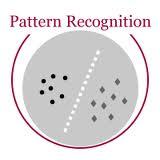Ear recognition can be described as a revived scientific field. Ear biometrics were long believed to not be accurate enough and held a secondary place in scientific research, being seen as only complementary to other types of biometrics, due to difficulties in measuring correctly the ear characteristics and the potential occlusion of the ear by hair, clothes and ear jewellery. However, recent research has reinstated them as a vivid research field, after having addressed these problems and proven that ear biometrics can provide really accurate identification and verification results. Several 2D and 3D imaging techniques, as well as acoustical techniques using sound emission and reflection, have been developed and studied for ear recognition, while there have also been significant advances towards a fully automated recognition of the ear. Furthermore, ear biometrics have been proven to be mostly non-invasive, adequately permanent and accurate, and hard to spoof and counterfeit. Moreover, different ear recognition techniques have proven to be as effective as face recognition ones, thus providing the opportunity for ear recognition to be used in identification and verification applications. Finally, even though some issues still remain open and require further research, the scientific field of ear biometrics has proven to be not only viable, but really thriving.
翻译:长期以来,耳目生物鉴别技术被认为不够准确,在科学研究中占据次要位置,仅被视为对其他类型的生物鉴别技术的补充,因为很难正确测量耳耳特征,而且耳朵可能被头发、衣服和耳首首封住;然而,最近的研究在解决这些问题并证明耳目生物鉴别技术能够提供真正准确的识别和核查结果后,已将其恢复为生动的研究领域; 已经开发并研究了若干2D和3D成像技术,以及使用可靠排放和反射的声学技术,以利耳目识别,同时在完全自动识别耳目方面也取得了显著进展; 此外,经证明耳目生物鉴别技术大多没有侵入性,足够持久和准确,而且难以涂抹和伪造; 此外,不同的耳目识别技术已证明与表面识别技术一样有效,因此有机会在识别和核查应用中使用耳目识别。 最后,尽管有些问题仍然开放,需要进一步研究,但耳科生物鉴别技术的科学领域已证明不仅可行,而且确实生机勃勃勃。





